SAN CATALDO:
The vegetation is rather articulated, characterized by a good degree of naturalness. In the lower elevations, clays prevail, while in the higher portions, the substrate becomes a limestone matrix. On the clays, cultivated fields prevail, as well as hay meadows dominated by Cynosurus cristatus or Arrhenatherum elatius subsp. elatius. On the other hand, pastures dominated by Bromopsis erecta are more represented on the limestones. The woody vegetation here also differs about the different substrates, on the clays common broom (Spartium junceum), sloe (Prunus spinosa subsp. spinosa) and blackthorn (Cornus sanguinea subsp. hungarica) dominate. On limestones, in addition to blackthorn, hawthorn (Emerus major), common juniper (Juniperus communis) and various Cytisophyllums (Cytisophyllum sessilifolium, C. spinescens) are more frequent. Woodlands, develop almost exclusively on the highest sites, where the forest component is represented by hornbeam (Ostrya carpinifolia) and flowering ash (Fraxinus ornus subsp. ornus).



Description of the species
Anacamptis morio
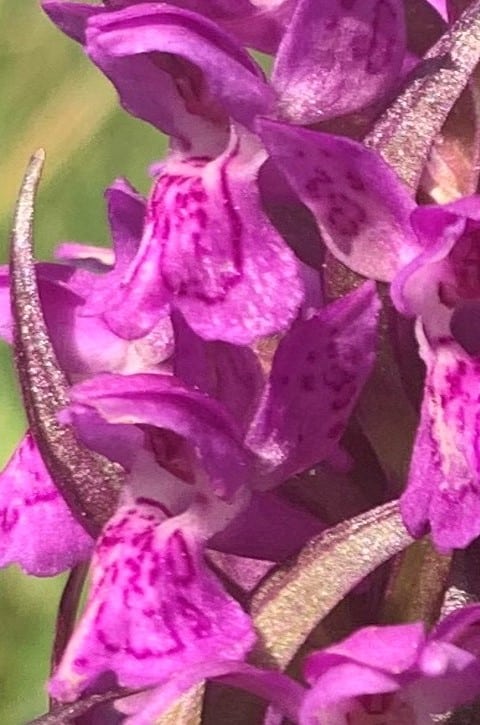
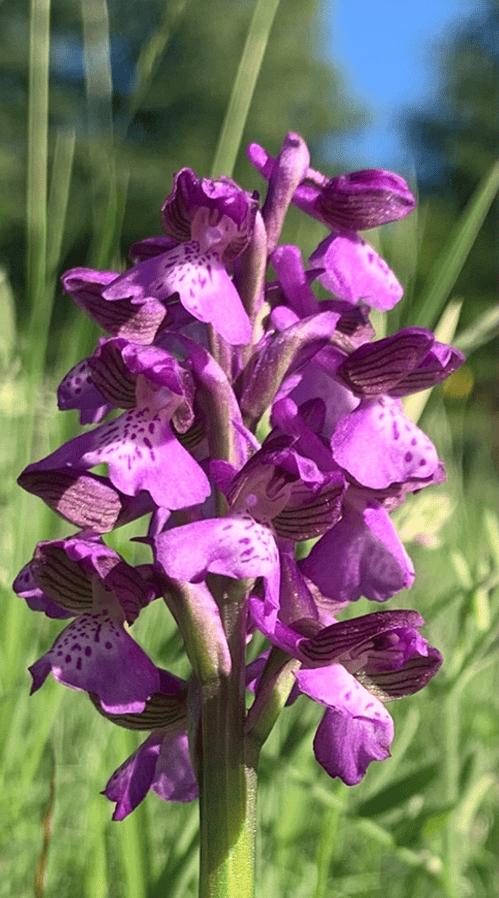
Anacamptis morio
Etymology: the origin of the specific epithet is currently unclear. The term morio may derive from the latin morio-onis (clown), because of the spotted flowers resembling the clothes of a clown, or morrion from the Spanish (helmet) because of the way the tepals are arranged.
Description: a medium perennial up to 35 cm in height. The scape, ranges from green to purplish. The lower leaves are lanceolate and arranged in a basal rosette, while the upper leaves wrap around the scape. The inflorescence consists of 5 to 25 flowers. The flowers are purple in colour; white flowers are not uncommon. The tepals are almost always streaked with green. Lip bluntly 3-lobed and almost folded in 2, the edge is crenulated, the central part paler than the margins characterized by many small purple maculae. Pollinated mainly by bees.
Anacamptis pyramidalis
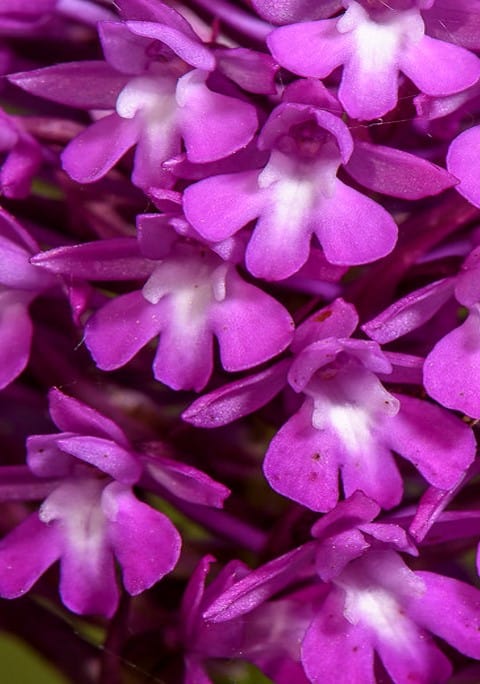
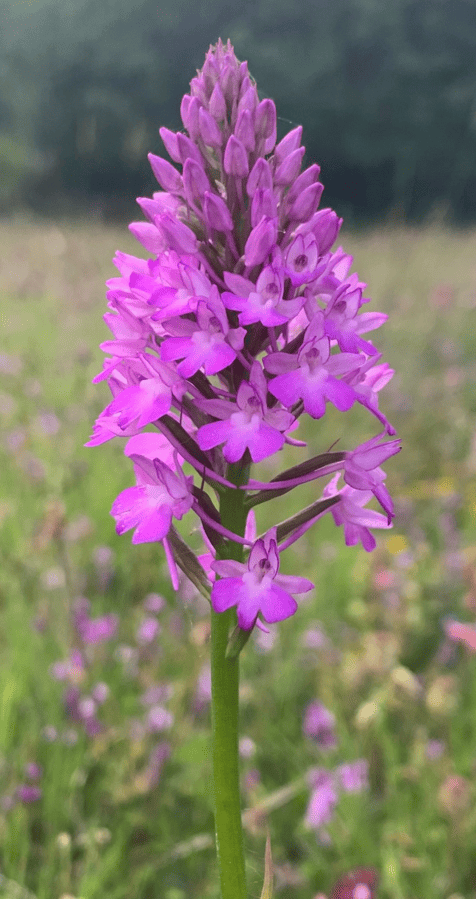
Anacamptis pyramidalis
Etymology: the specific epithet is of latin origin pyramidalis (pyramidal). The name was given to it due to the cone-shaped inflorescence.
Description: a plant that can reach up to 60 cm in height. The green scape is very thin. The lower leaves are lanceolate, up to 25 cm long and not arranged in a basal rosette, along the scape the leaves are fasciated and small. The inflorescence can consist of up to 100 small flowers. The colour of the flowers varies from pink to purple, and rare are white flowers, borne in distinctly cone-shaped or dome-shaped dense spikes. The lip is 3-lobed and the central lobe is less wide than the lateral one. The spur is very long, ribbon-like, that exceeds the length of the ovary.
Himantoglossum adriaticum
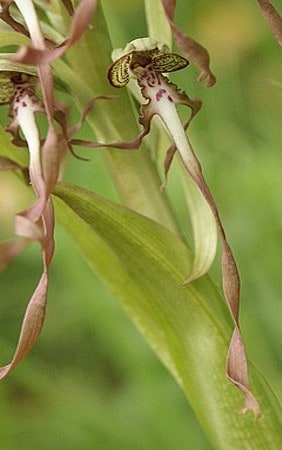
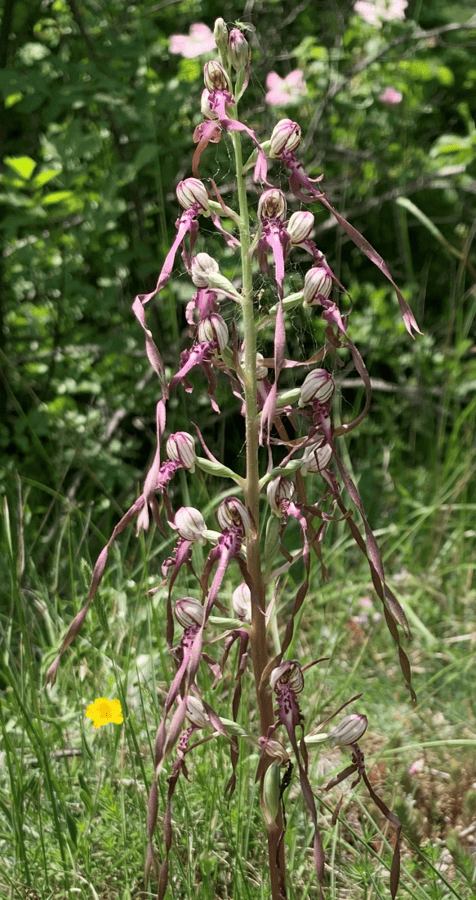
Himantoglossum adriaticum
Etymology: the term Himantoglossum derives from the greek (ribbon-tongued flower).
Description: a plant up to 90 cm high, the scape is green and sometimes purple shaded. It has ovate lower leaves, while the upper leaves band the stem. The inflorescence consists of 15 to a maximum of 40 flowers. The tepals are green with purple streaks that join to form a helmet around the lip. The lip is 3-lobed and has a white base with purple maculae, the median lobe is thin ribbon-like, bifid at the apex and up to 65 mm long. Spur 2 to 4 mm long. The flowers, although poorly nectariferous, are very fragrant and attract a pollinators from various families: Hymenoptera, Diptera, Coleoptera, etc.
Ophrys bertolonii
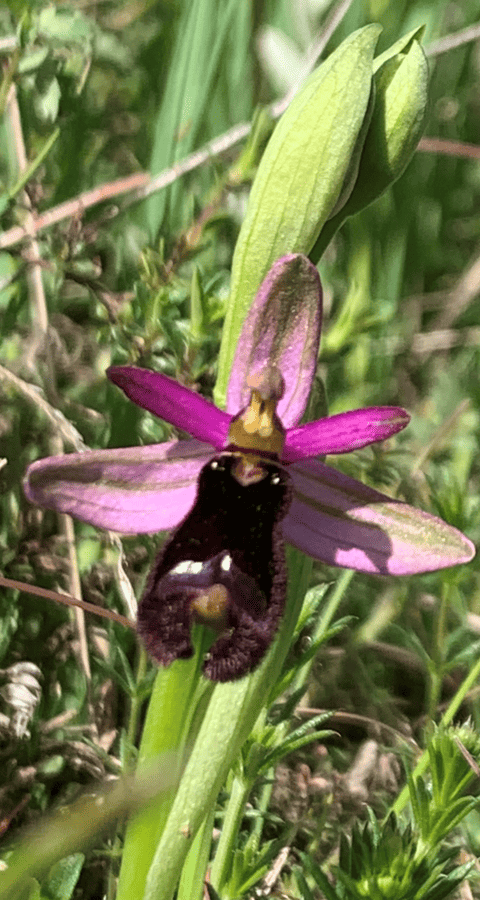
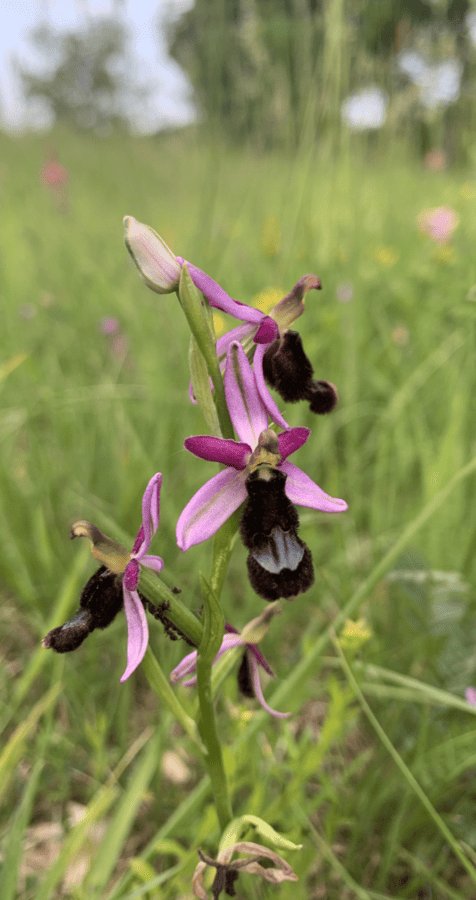
Ophrys bertolonii
Etymology: the name was given to honour the famous botanist, Antonio Bertoloni.
Description: a plant up to 90 cm high. Stem green and slender. Leaves arranged in a basal rosette. The inflorescence consists of 2 to 8 large flowers. The sepals are pink, while the tepals are a deeper pink than the sepals and are sometimes purple. The entire, black labellum has the typical saddle shape covered with reddish-brown hairs on the margins. At the base of the labellum, there is a shiny shield-shaped speculum of a blue-red colour. The apicle is very large and green to yellow in colour, facing upwards or forwards. Gynostemium elongated and pointed.
Ophrys holosericea
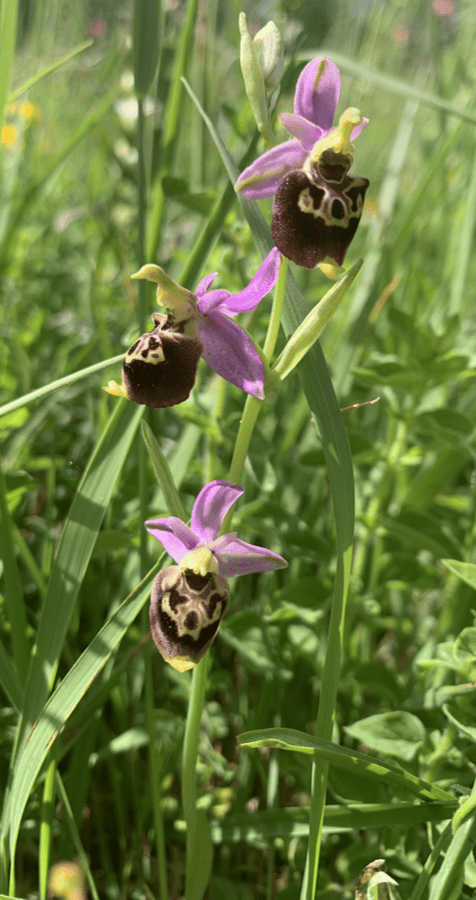
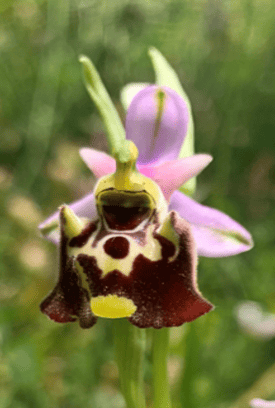
Ophrys holosericea
Etymology: holosericea derives from the greek holos-e (all) and serikos (silk), due to the velvety appearance of the labellum.
Description: This species is characterized by its high morphological variability which has led many authors to describe different infraspecific entities. Plant up to 40 cm high. Erect and light green scape. The lower leaves are almost all united to form a basal rosette, and the upper leaves are enveloping the scape.
The spike-like inflorescence may consist of 2 to 10 flowers. Sepals are ovate and may be white, pink, or purplish red with green veins. Petals are subtriangular, pink, or purplish red and rarely white. Lip downwards, velvety with brownish marginal hairiness with more or less evident basal gibbosity. The speculum is very variable in shape, brownish-red in colour with white or yellow margins. Apicle is very developed facing forward and yellowish-green above. Gynostemium is short and acute.
Ophrys sphegodes
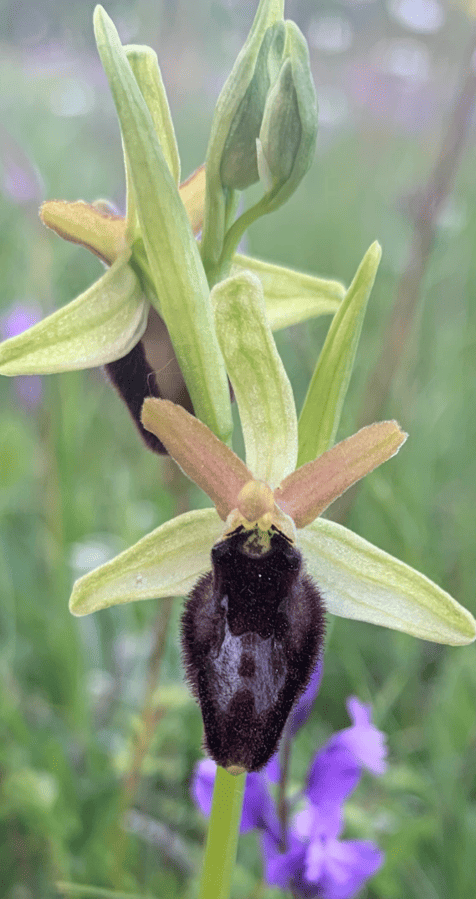
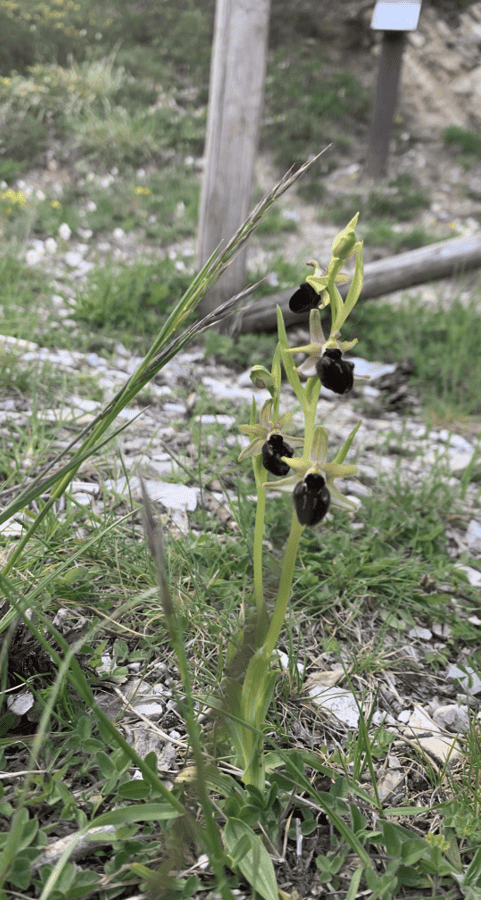
Ophrys sphegodes
Etymology: the epithet sphegodes comes from the greek sphekos, meaning wasp-like.
Description: plant up to 55 cm high. Slender green scape. The lower leaves are clustered to form a light green basal rosette, and the upper leaves wrap around the stem. The inflorescence may consist of 2 to 15 flowers. Sepals green, the middle one slightly forward-facing.; the petals are smaller with slightly pinkish, wavy margins. The lip is large and downward-facing, highly variable in shape and colour, with marginal hairiness. The margin is often bordered by a yellow line. It has a brownish or dark blue H-shaped speculum. Greenish and very conspicuous gynostemium.






